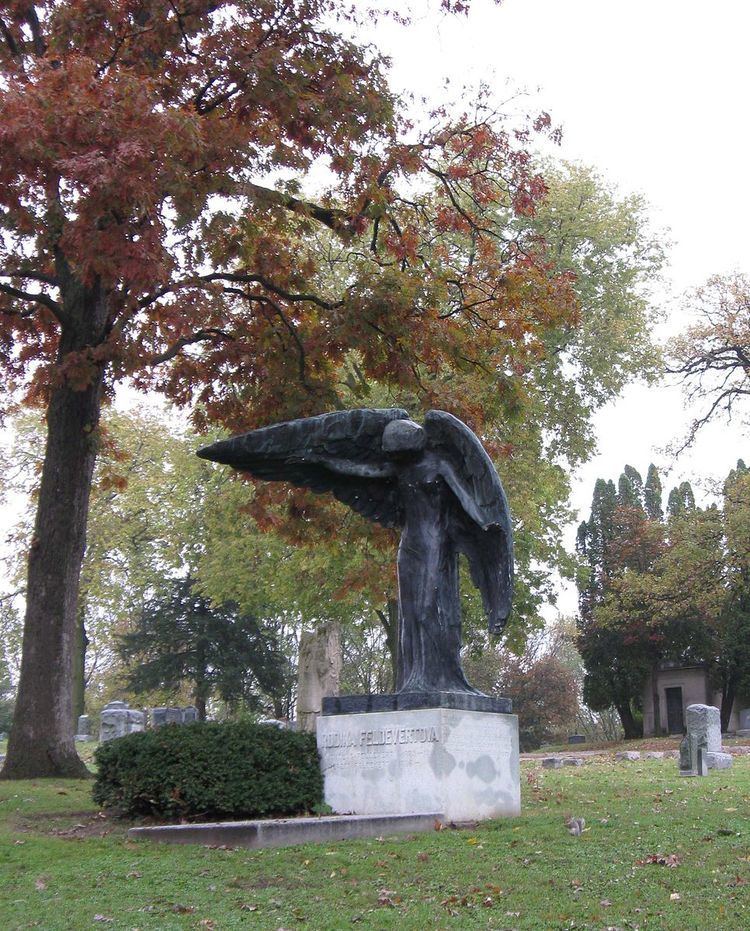Established 1843 Type Public Size 40 acres (160,000 m) Phone +1 319-356-5105 | Owned by City of Iowa City Founded 13 February 1843 | |
 | ||
Address 1000 Brown St, Iowa City, IA 52245, USA Burials Marquis Childs, L. M. Shaw, Coe I. Crawford, William Lee Cazort Similar Hotel Wapello, Granger House Museum, Matsell Bridge, Mercer County Courthouse, Ambrose Hall | ||
Oakland Cemetery is located on the north side of Iowa City, Iowa, and has served as the main cemetery for Iowa City since 1843.
Contents
Cemetery history
Oakland Cemetery was deeded to the residents of Iowa City on February 13, 1843. Over the years the cemetery has expanded to 40 acres (160,000 m2). Supported by taxpayers, the cemetery is a non-perpetual care facility. As a public institution anyone can be buried in Oakland, but traditionally it was a Protestant cemetery; Catholics were usually buried in the nearby St. Joseph Cemetery, and Jewish Iowa Citians were buried at Agudas Achim Cemetery. Oakland is adjacent to Hickory Hill Park, a large natural area in Iowa City.
Black Angel
A locally famous monument, the 8.5-foot (2.6 m) tall "Black Angel" statue by Mario Korbel was erected in 1913 as a memorial to Nicholas Feldevert. Local lore and superstition surround this beautiful, but eerie, Angel of Death.
The story of the Black Angel dates back to the late 19th century when Teresa Feldevert traveled to Iowa City from an area that is now known as the Czech Republic and Slovakia. Her first marriage produced her son, Edward Dolezal, who died in Iowa City in 1891. Teresa had the bronze angel statue made in Chicago by Czech-American sculptor Mario Korbel and transported to Iowa City to be placed in the cemetery in 1913. Her second husband, Nicholas Feldevert’s ashes were placed in a repository at the base of the statue. When Teresa died in 1924, her ashes were placed beside her husband’s. Though the monument displays Teresa’s birthdate, there is no sign of her deathdate. Over the years the bronze statue oxidized, acquiring a greenish-black patina.
Many students and surrounding residents of Iowa City visit the statue. The biggest night of attraction is Halloween where students and residents gather around the statue, some test their luck by touching or kissing the statue. It is said that if one touches or kisses the statue they will be struck dead, unless that person is a virgin. It is also rumored that if a pregnant woman walks beneath the statue’s stretched wings that she will miscarry. Vandals have damaged the statue, removing several fingers.
The Black Angel is planned to be featured in an upcoming independent paranormal feature film.
